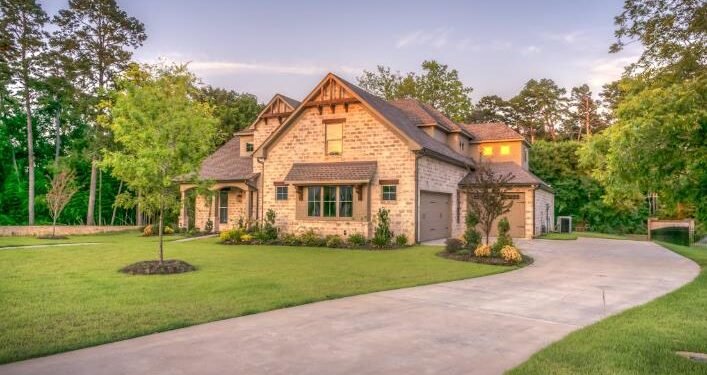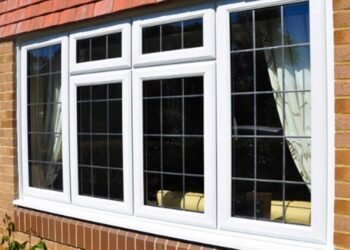In Tacoma, WA, energy bills have been steadily rising, causing homeowners to seek ways to make their homes more energy-efficient. With increasing environmental concerns and the need to reduce energy consumption, many homeowners are exploring renovations that not only lower utility bills but also increase home comfort. Whether you are planning to stay in your home for years or thinking of selling soon, making energy-efficient renovations can be a smart investment, notes TrueDoor PM Temecula experts.
By making a few strategic changes, you can enjoy a more comfortable living space while cutting down on energy costs.
1. Upgrade Your Insulation for Better Temperature Control
Many older homes often have inadequate or aging insulation that allows heat to escape during the winter and lets cool air leak out during the summer. This means your heating and cooling systems have to work harder to maintain a comfortable indoor temperature, leading to higher energy bills.
Adding insulation in key areas such as the attic, walls, and floors can significantly reduce energy loss. Insulation acts as a barrier that prevents heat from escaping in cold weather and keeps your home cool in the summer by limiting heat from entering. Consider using high-performance insulation materials like spray foam or blown-in cellulose, which are known for their energy-saving properties.
2. Consider Replacing Your Aging Roof
When it comes to improving energy efficiency, many homeowners overlook the roof, which plays a crucial role in regulating indoor temperatures. An aging or damaged roof can allow heat to escape, leading to increased energy consumption and higher utility bills. In regions where weather conditions can be unpredictable, it’s essential to have a roof that can protect your home and keep energy costs in check.
Working with a local Tacoma WA roof replacement company can help you choose energy-efficient roofing materials that best suit the local climate. Options such as metal roofs or cool roofs are designed to reflect more sunlight and absorb less heat, keeping your home cooler during the summer. By opting for these energy-saving materials, you can reduce the strain on your air conditioning system and lower your energy bills. A local roof replacement professional will understand the specific weather challenges in your area and can recommend the best solutions to keep your home well-insulated and energy-efficient throughout the year.
3. Installing Energy-Efficient Windows: A Smart Move
Windows are another area where energy efficiency can be lost. Older or poorly insulated windows can allow drafts and leaks, forcing your heating and cooling systems to work harder. If your home has single-pane windows or windows with deteriorating seals, it may be time to consider upgrading to energy-efficient windows.
Energy-efficient windows are designed to reduce heat transfer, keeping your home warmer in the winter and cooler in the summer. Double or triple-pane windows with low-emissivity (low-E) coatings can block ultraviolet rays and reflect infrared light, helping to regulate indoor temperatures more effectively. By investing in new, energy-efficient windows, you can prevent energy loss and create a more comfortable living environment while reducing your heating and cooling costs over time.
4. Smart Thermostats: Taking Control of Your Energy Usage
Upgrading to a smart thermostat is one of the easiest and most effective ways to improve your home’s energy efficiency. Traditional thermostats rely on manual adjustments, which can lead to energy waste if the system is running when it’s not needed. Smart thermostats, on the other hand, allow you to program and control your heating and cooling systems based on your daily schedule.
These devices can be adjusted remotely through smartphone apps, giving you full control over your home’s temperature even when you’re not there. Many smart thermostats also learn your habits and automatically adjust the temperature to maximize energy savings without sacrificing comfort. By using a smart thermostat, you can reduce energy consumption and enjoy lower utility bills without having to constantly monitor your system.
5. Invest in Energy-Efficient Appliances for Long-Term Savings
One of the simplest ways to improve your home’s energy efficiency is by upgrading your appliances. Older appliances, especially those over ten years old, tend to consume far more energy than modern, energy-efficient models. This is particularly true for high-energy-use appliances like refrigerators, washing machines, dishwashers, and dryers.
Energy Star-rated appliances are designed to meet strict energy efficiency guidelines set by the Environmental Protection Agency (EPA), ensuring they use significantly less energy without compromising on performance. These appliances are equipped with advanced features that reduce energy consumption and can help you save money on your electricity bills in the long run. When shopping for new appliances, look for the Energy Star label to ensure you’re making an eco-friendly choice that reduces your carbon footprint and lowers your household energy usage.
6. Add a Radiant Barrier in the Attic to Reduce Heat Gain
Attic spaces are notorious for absorbing and retaining heat, particularly during the warmer months. This heat can transfer into your home, forcing your air conditioning system to work harder to keep temperatures comfortable. Installing a radiant barrier in the attic can help reduce this heat gain by reflecting radiant heat away from your home.
Radiant barriers consist of a reflective material, often aluminum, that is installed in the attic to prevent heat from penetrating the living space below. This simple upgrade can make a noticeable difference in your home’s energy efficiency, especially during the summer when heat buildup is at its peak. By reducing the amount of heat that enters your home, you’ll ease the load on your cooling system and lower your energy costs.
Improving your home’s energy efficiency is a win-win: you save money on utility bills while also increasing the comfort and value of your home. From upgrading insulation and replacing your roof to installing energy-efficient windows and appliances, these renovations offer both immediate and long-term benefits.
By taking advantage of renewable energy sources like solar panels and making smart changes like sealing air leaks and switching to LED lighting, you can significantly reduce your energy consumption. These upgrades are an investment that pays off over time, providing you with a more sustainable, cost-efficient home. Start small with quick fixes like sealing gaps and upgrading your lighting, and gradually work toward larger renovations like replacing your roof or installing solar panels. Each step you take brings you closer to a greener, more energy-efficient future for your home.












